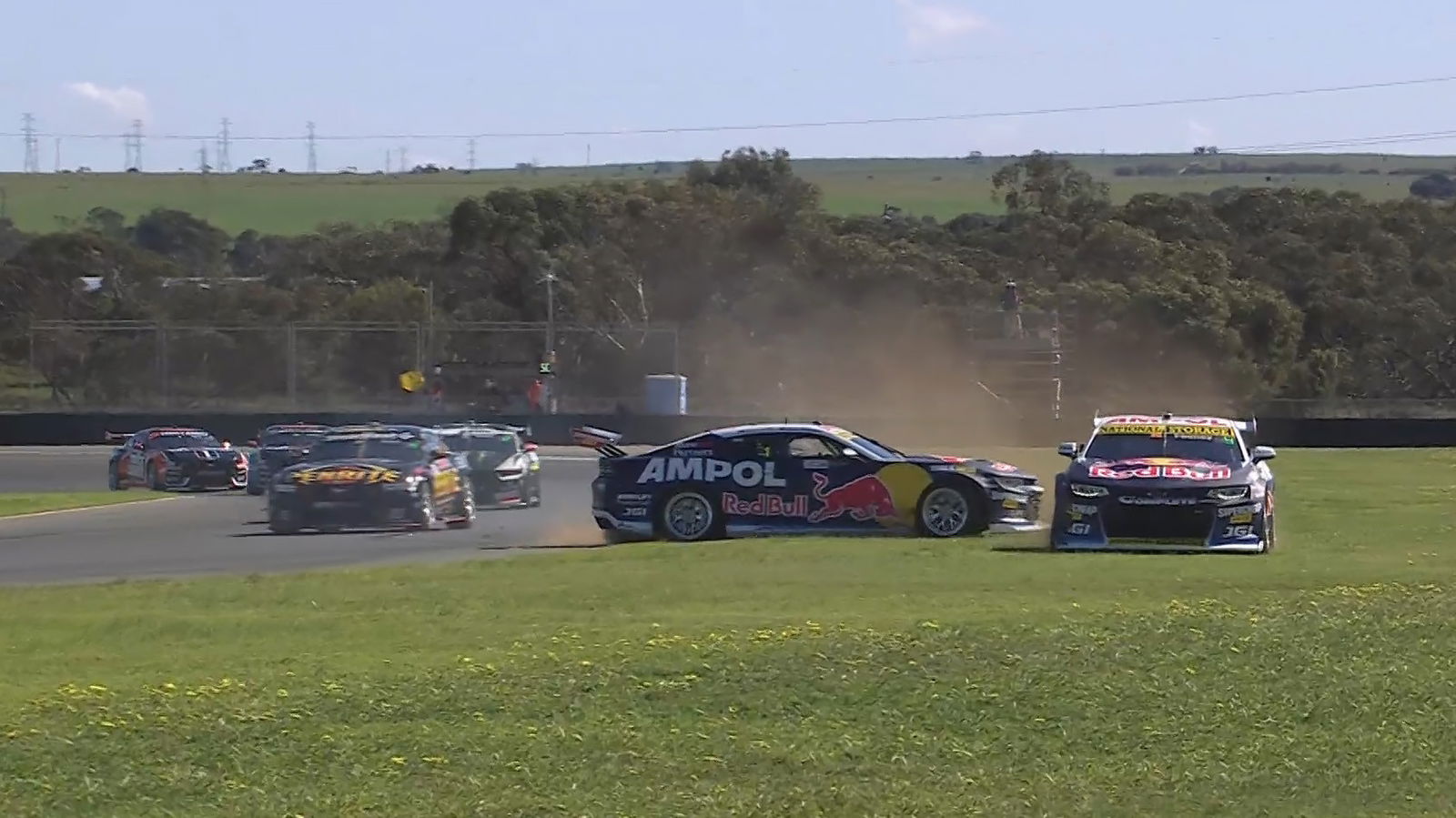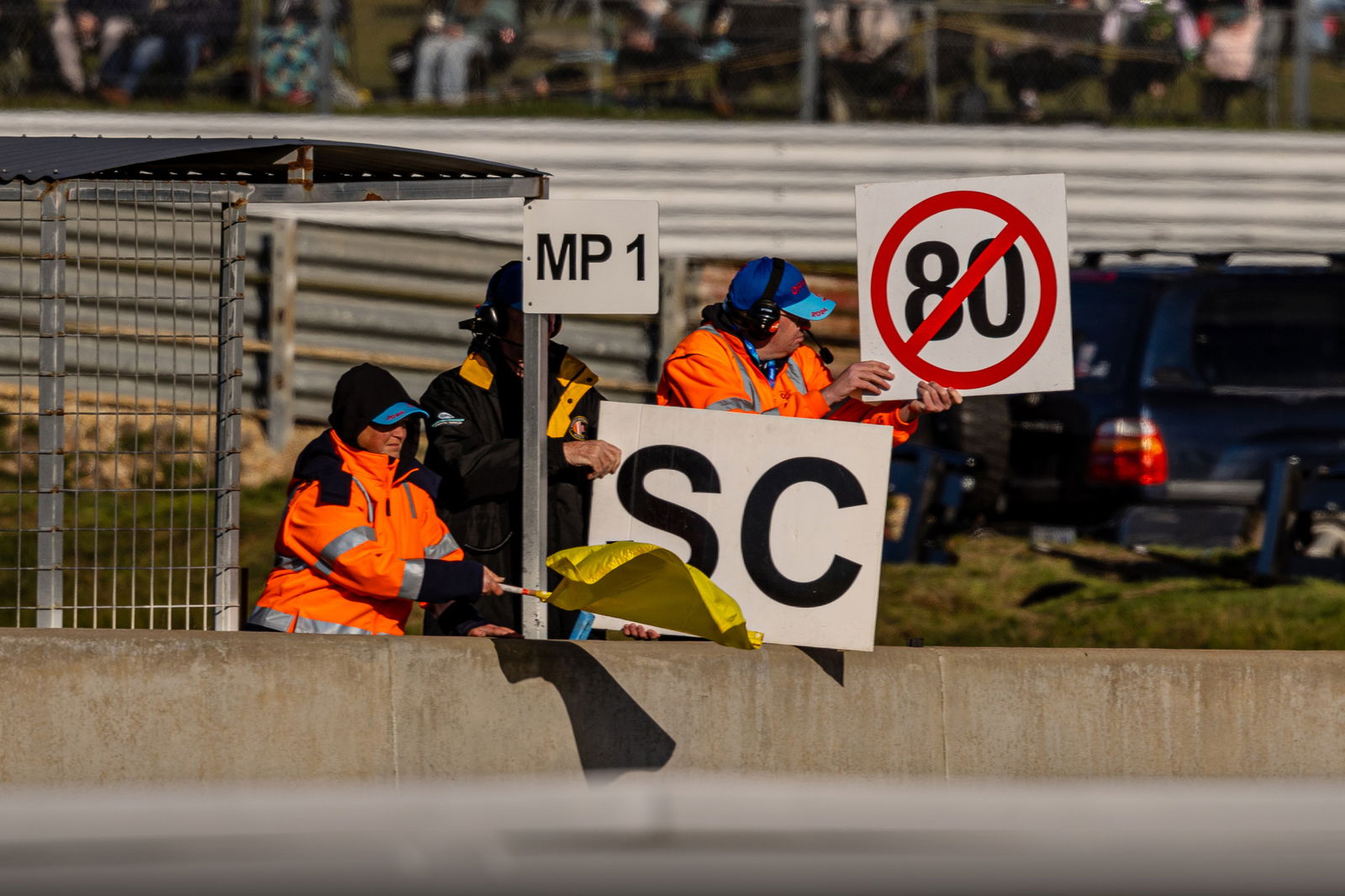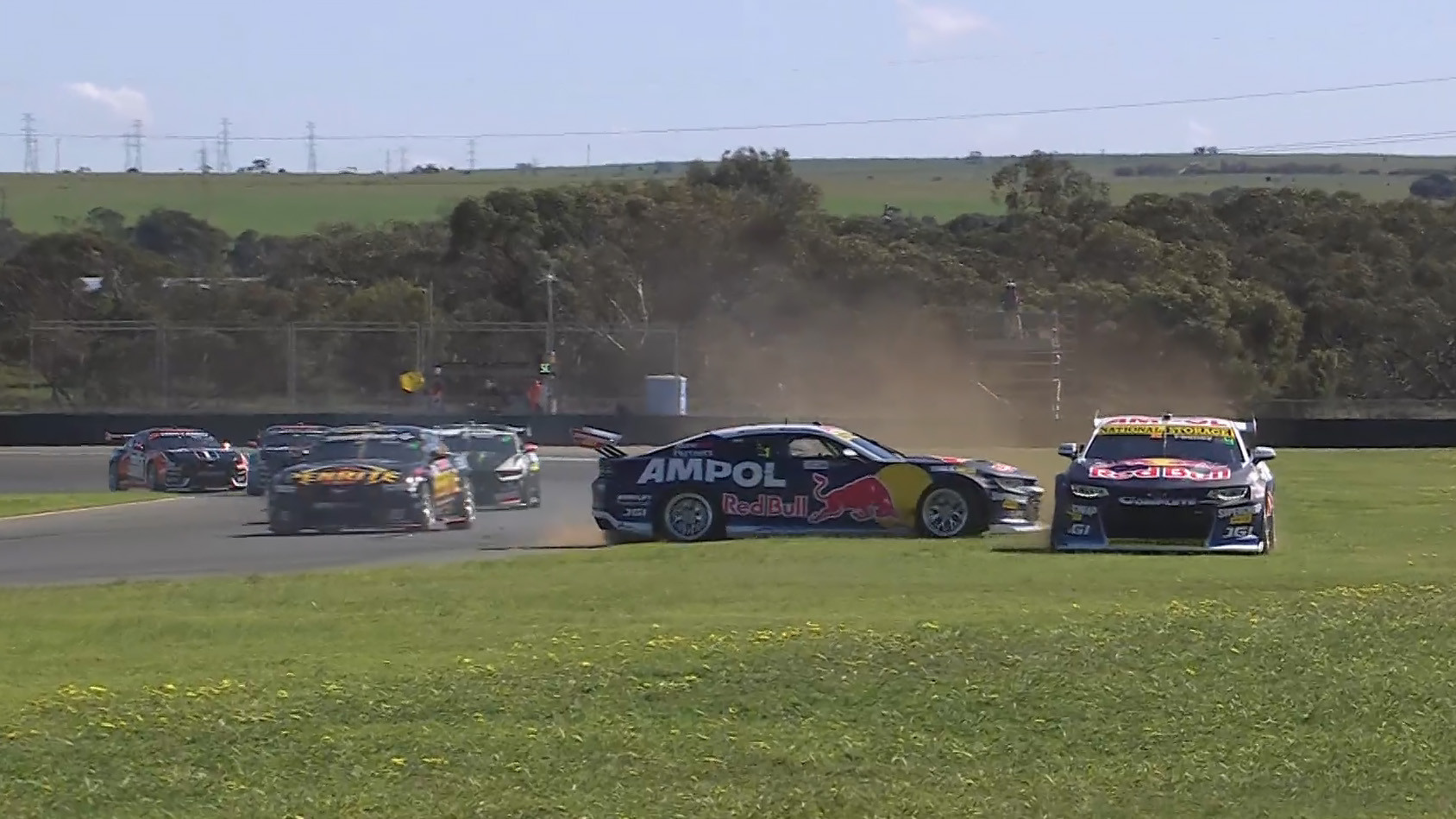
Jamie Whincup ran into the back of Scott Pye during Practice 4 at The Bend 500.
The category’s Commission will meet tomorrow to rubber stamp a planned rollback to traditional Safety Car procedures, with increased emphasis on respecting double-waved yellow flags.
That means abandoning the electronically limited 80km/h slowdown – also known as Full Course Yellow – introduced last year and the convoluted slow zone system trialled at The Bend.
Officials will instead crack down on drivers who speed through double-waved yellow areas after a Safety Car period is called, often while racing back to pit lane.
Drivers continuing at unabated speed under yellows led to officials mandating an 80km/h slowdown within 15 seconds of a Safety Car period starting.
However, that process created a strategic loophole that effectively gave anyone pitting during the Safety Car slowdown a major advantage over their rivals.
Fears that would result in a lack of strategic divergence during the Bathurst 1000 resulted in a ‘slow zone’ system being trialled at The Bend.
Trial runs in practice included Jamie Whincup crashing into the back of Triple Eight teammate Scott Pye as the latter braked for a slow zone.
It triggered an outpouring of criticism from drivers and has resulted in Supercars working with Motorsport Australia to strip back the system.
The parties are expected to monitor speeds under double-waved yellows and penalise any drivers deemed not to have slowed sufficiently.
Details of that process are expected to be among the items on Thursday’s Commission agenda.

Supercars abandoned the 80km/h speed limit. Image: Speedcafe
In the meantime, Supercars CEO James Warburton said the proposed changes are the result of extensive consultation.
“The first priority in any Safety Car situation is always the safety of everyone involved — the drivers, the crews, marshals, and officials. That will never change,” Warburton said.
“This adjustment strikes the right balance between maintaining rigorous safety protocols and delivering the thrilling racing our fans expect.
“It’s about letting the best touring car drivers in the world race while ensuring the highest standards of safety.
“We’ve listened to feedback from teams, drivers, and officials.
“The revised approach reduces confusion, improves race flow, and ensures that Bathurst remains the ultimate test of skill and strategy.
“We’re backing this change with enhanced monitoring technology to make sure compliance is clear and consistent. Safety and fairness go hand in hand.”

